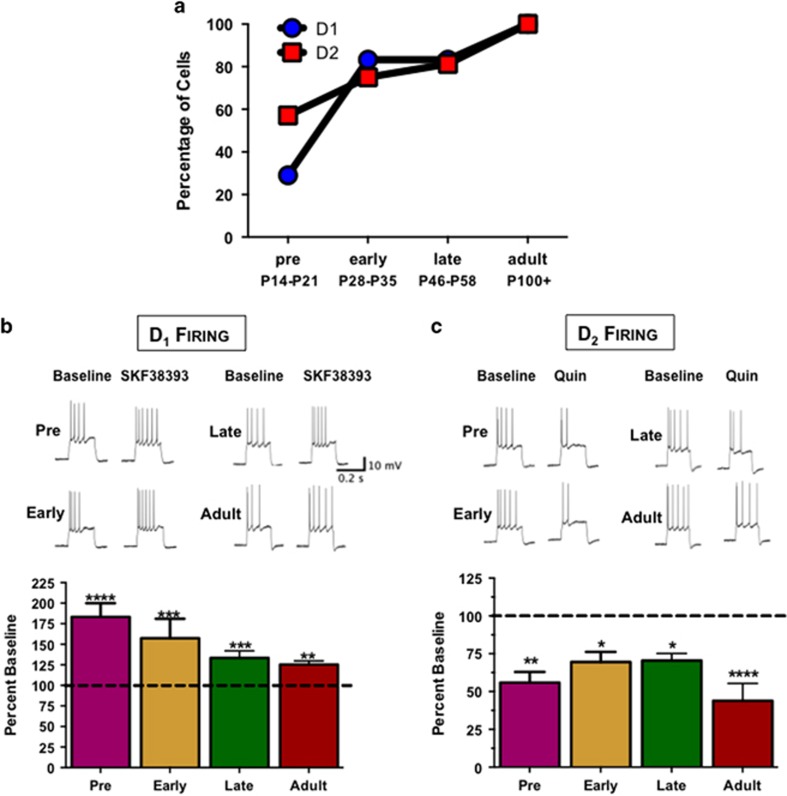Figure 4.
Developmental time course of dopamine (DA) receptor modulation of evoked firing frequency of pyramidal neurons in layer V of the prelimbic cortex (PrL-C). (a) D1 and D2 receptor modulation of firing frequency of layer V pyramidal neurons from preadolescence through adulthood. Percentage of cells that respond to D1 (increased firing; circle) or D2 (decreased firing; square) receptor modulation of evoked firing by the D1 receptor agonist SKF38393 (5 μM) or the D2 receptor agonist quinpirole (5 μM). The four developmental age groups tested were preadolescence (PD14–21), early adolescence (PD28–35), late adolescence (PD46–58), and adult (>PD90). (b) Percent increase from baseline firing frequency following D1 stimulation only in those cells from panel a that responded to D1 receptor stimulation. D1 receptor stimulation resulted in a significant increase in firing frequency in all developmental age groups (n=2–8 cells per developmental age group; **p<0.01, ***p<0.001, and ****p<0.0001). (c) D2 receptor modulation of firing frequency in layer V pyramidal neurons from preadolescence through adulthood. Shown is the percent reduction from baseline firing frequency following quinpirole only in those cells from panel a that responded to quinpirole. Bath application of quinpirole resulted in a significant reduction in evoked firing frequency at all time points (n=8 cells per group; *p<0.05, **p<0.01, and ****p<0.0001). All values represent the mean±SEM.

